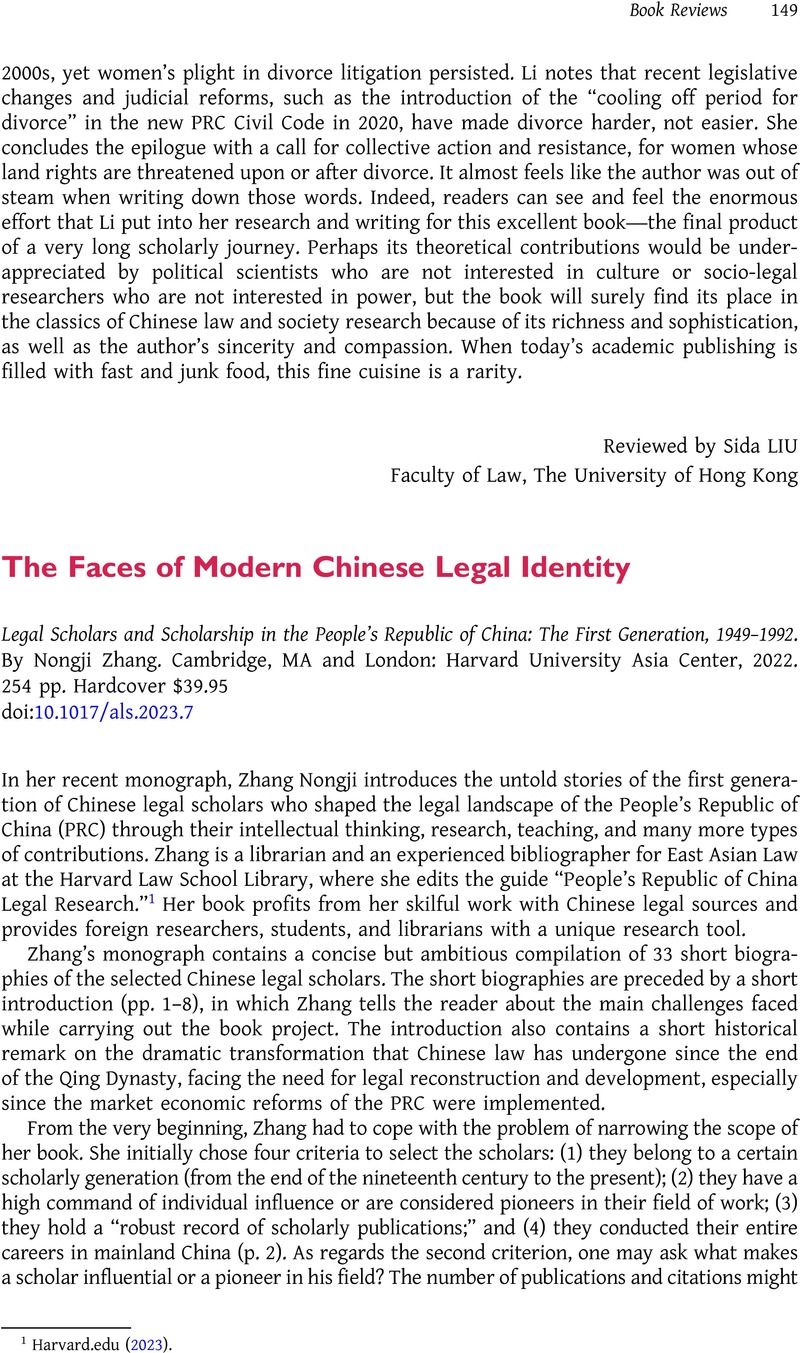Crossref Citations
This article has been cited by the following publications. This list is generated based on data provided by Crossref.
Röseler, Sandra Michelle
2025.
Towards a Knowledge History of Chinese Law: An Introduction to the History of Chinese Administrative Law Science, Its Pioneering Actors, and Knowledge of Normativity.
Asian Journal of Law and Society,
p.
1.



